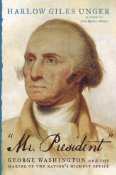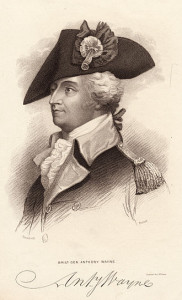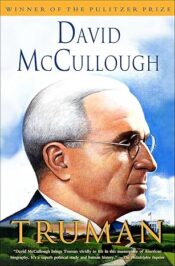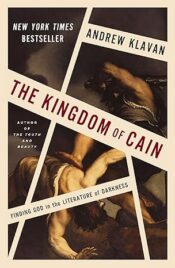
“Mr. President”: George Washington and the Making of the Nation’s Highest Office by Harlow Giles Unger
 Mr. President is Unger’s best book to date. Unger doesn’t make a single faulty step in his project to show how Washington framed the office of the President. His research shows through in his writing and he supports his contentions with footnotes as well as logic. Unger credits Dr. John P. Kaminsky at the onset, for his help on the project. Kaminsky is a scholar of some considerable renown that this reviewer had the honor of interviewing a few years ago.  In any case, this, like each of the last several of Unger’s books has been better than the last.
Mr. President is Unger’s best book to date. Unger doesn’t make a single faulty step in his project to show how Washington framed the office of the President. His research shows through in his writing and he supports his contentions with footnotes as well as logic. Unger credits Dr. John P. Kaminsky at the onset, for his help on the project. Kaminsky is a scholar of some considerable renown that this reviewer had the honor of interviewing a few years ago.  In any case, this, like each of the last several of Unger’s books has been better than the last.
In Mr. President, Unger manages to synthesize a lot of information in a relatively short space. Despite its brevity, the reader never feels rushed, or that some important facet of Washington’s life and character might have been glossed over. It is interesting to read Unger’s book in conjunction with Ray Raphael’s Mr.President (reviewed here) and Logan Bierne’s The Blood of Tyrants (reviewed here).
All three books have the stated objective of showing how Washington’s actions framed the office of the President for successors. Raphael’s book is most similar in the sense that it focuses on the legal boundaries of the Executive Branch, first consentrating on the Constitutional Convention and the wrangling over the particulars of presidential authority, and then on some of Washington’s actions while in office. Bierne’s book devotes more attention to Washington’s actions as Commander in Chief, even prior to his election as president under the new Constitution. But Unger’s book methodically and almost ruthlessly lays out a supremely well organized depiction of how Washington defined the Executive in his two terms.
Unger contends that Washington established 7 principle pillars of presidential authority. These are:
- Foreign Policy
- Executive Appointments
- Government Finances
- Military Affairs
- Legislation by Proclamation and Executive Order
- Federal Law Enforcement
- Executive Privilege
Mr. President deftly illustrates how and why each of these pillars was erected by Washington. Some were partly the product of Washington’s character and his impatience for action, but all were motivated by genuine concern and interest in the well-being of the United States. There is nothing smacking of hagiography in Mr. President, although much of what Unger depicts is evidence of an admirable life. Despite this not being a massive tome, its author manages to include interesting bits of information, here and there, throughout the book, that give some flavor to who Washington was. For instance, Washington had a substantial library that included a variety of the best books of his day. These books were frequently annotated in Washington’s own handwriting, indicating that he had actively read and engaged with their subject matter. Some biographers slight Washington’s intellectual capacity. Unger is not one of those.
However, Mr. Unger doesn’t pull any punches as he explains the circumstances of Washington’s various ‘usurpations’ of power. (Various and sundry other Founders accused Washington of just that – like George Mason) For example, with regard to the authority of the President and the Executive Branch to make foreign policy, the Constitution stipulates that the Senate has the right to advise and consent. After an awkward exchange between Washington and the Senate, Washington resolved to interpret that stipulation as meaning that the President could conduct foreign policy on his own, and was free to disregard the advice of the Senate if he chose. The Senate would still retain the power to ratify any treaties made, but would henceforth have no role in constructing them.
Similarly, it was Washington who, after trying to be all-inclusive with his first cabinet (including political adversary Thomas Jefferson), and failing miserably, mandated that those in the executive branch would serve at the president’s pleasure. As Truman put it, the buck would stop at his desk. Thenceforth, Washington would consider his cabinet as advisers at best, but in reality as lieutenants obligated to do his bidding.
Some of Washington’s usurpations may have been absolutely necessary and beneficial to the country at first, but in retrospect have proven to be among the most harmful to its liberty and stability. Washington lent his authority and support to Hamilton’s pet project, The Bank of The United States. At the time, it’s doubtful any other action could have so firmly established the credit and economy of the fledgling republic. However, what this meant was that the Executive Branch, through the Treasury, via its ability to borrow on the credit of the United States, could bypass Congress entirely when spending government funds. Today, the United States is more that $18 Trillion in debt, and deficit spending continues unabated and unchecked.
Many of Washington’s successors have continued and expanded on the powers the first president carved out for the Executive Branch. While the Constitution stipulates that Congress has the power to declare war, raise and support armies, and provide for the common defense, it is the president who is charged with waging war. When faced with Indian uprisings, Washington didn’t wait for Congress but unilaterally dispatched troops.* (Washington was a man of action.) Unger points out:
Of more than a dozen wars that the United States have waged with other nations, Congress has issued formal declarations of war in but five of them — against Britain in the War of 1812, Mexico in 1846, Spain in 1898, Germany and Austria Hungary in World War I, and Japan and Germany in World War II. A presidential order sent the nation into all other conflicts.
It might have been Washington’s military background that made him impatient, when Congress moved too slowly to suit him. Whatever the cause, Washington saw fit to issue edicts that carried the force of law, and which entirely bypassed the legislative authority of Congress. Even before the Jay Treaty with Britain was ratified by the Senate, Washington issued a neutrality proclamation that became, in essence, the law of the land. Subsequent presidents, like Mr. Obama, have made much use of this power, and have been much less chary of its abuse.
Executive Privilege was established by Washington in the aftermath of the Jay Treaty. Although there is no mention of such a concept in the Constitution, Washington established it as a bedrock principle.  His argument was on the basis of needing to retain the boundaries between the branches of government – although there is nothing in the Constitution defining this separation of powers.
In addition to setting countless precedents for all future presidents, Washington also created international precedents. For instance, Washington’s Neutrality Proclamation established a new principle of international law as well as American Constitutional Law.
— namely, the concept of neutrality and the rights of non-participating nations in wartime.  Although rules abounded governing relations between warring nations, the world had ignored the rights of neutrals until George Washington raised the issue.
According to Unger’s footnote, the rest of the world wouldn’t catch up with Washington on this for more than half a century.
Not until 1856, with the Declaration of Paris, would the world’s leading maritime powers agree to codify the rights of neutrals and belligerents on the high seas. The Hague Conventions of 1908 added further clarifications and codifications of the rights and obligations of neutrals.
If Unger is successful in showing the consequences of Washington’s actions, he is even more so in showing the character behind them.
In a delightful description of Washington standing awkwardly before the Senate asking “Do you advise and consent?†to a trade treaty negotiated with the Creek Indians, neither party knew precisely what to do. When Congress elected to give it some consideration, Washington left red-faced.
Rather than waiting for the Senate’s committee “to determine the mode of communication between the President and the Senate on Treaties and Nominations,†Washington resolved the issue himself.
“… resolving to remove certain executive functions from the legislature’s control. “
Washington figured the executive could negotiate the treaties and the Senate could decide whether or not to ratify them. But they certainly weren’t going to be involved prior to that.  The same would be true for presidential nominations. Washington’s laconic statement is worth quoting.
“It could be no pleasing thing, I conceive,†Washington scolded the Senate, “for the President to … hear the propriety of his nominations questioned …. As the President has a right to nominate without assigning his reasons, so has the Senate a right to dissent, without giving there’s.â€
In other words, take it or leave it.
Mr. President depicts a Washington who,
… from the moment he took office in the spring of 1789, … he had been obsessed with establishing the President as “a supreme power to govern the concerns of a confederated republic.â€Â Fearing anarchy, disunion, and an end to American Freedom, if he failed to act decisively, he transformed himself — and the presidency — from a relatively impotent figurehead into America’s most powerful leader, creating what modern scholars have called the “imperial presidency.â€
Unger clearly illustrates how the first Executive addressed as Mr. President, transformed the office in ways that have consequences even today.

 The posts are coming!
The posts are coming!


0 comments
Kick things off by filling out the form below.
Leave a Comment